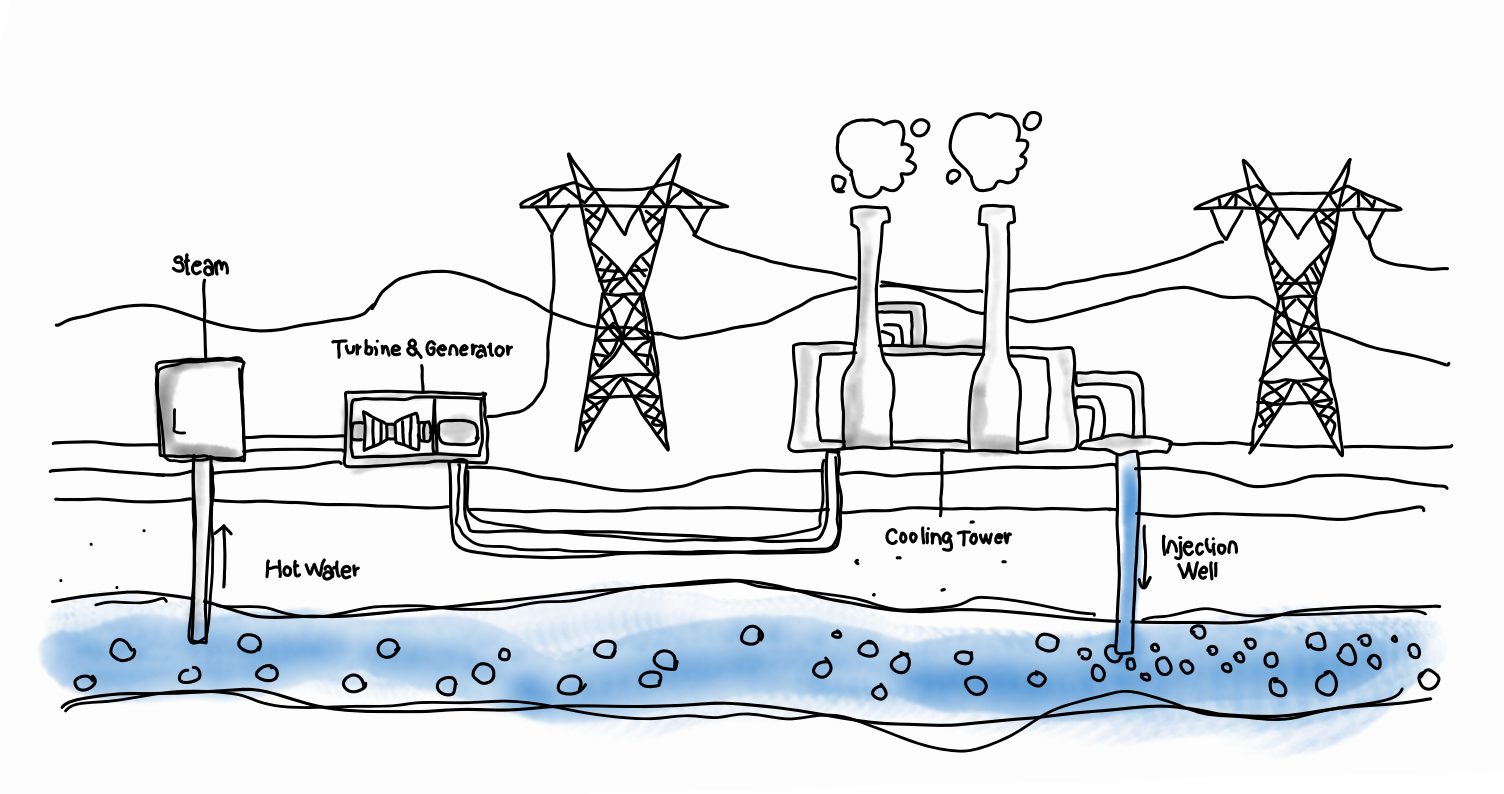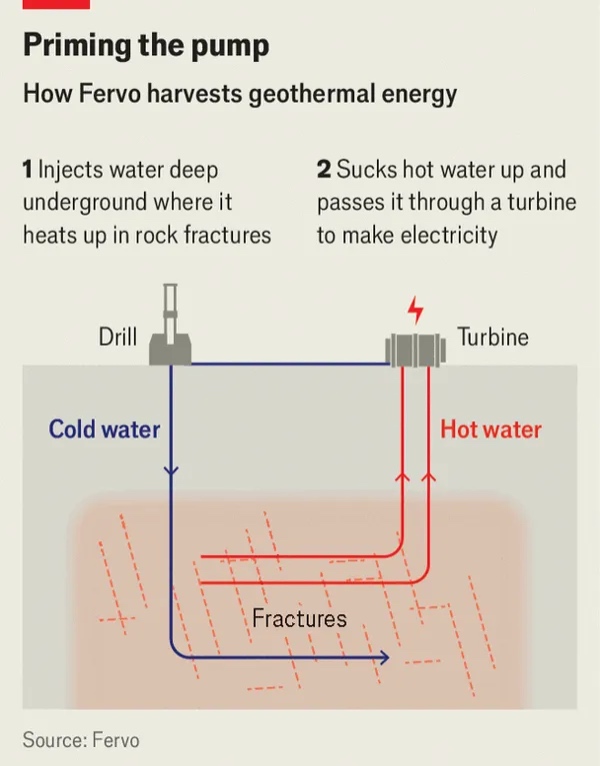Geothermal energy could outperform nuclear power: Tricks from the oil industry have produced a hot-rocks breakthrough

GEOTHERMAL ENERGY may be approaching its Mitchell moment. George Mitchell, a scrappy independent oilman, is known as the father of fracking. Nearly three decades ago, he defied Big Oil and the conventional wisdom of his industry by making practical the hitherto uneconomic technique of pumping liquids and sands into the ground to force out gas and oil from shale rock and other tight geological formations. The enormous increase in productivity that resulted, known as the shale revolution, has transformed the global hydrocarbon business.
Now Fervo Energy, another scrappy Texan upstart, is applying such hydraulic fracturing—alongside other techniques borrowed from the petroleum industry—to the sleepy geothermal sector. Should it succeed, it would mean this relatively fringe source of energy could, in time, become a major player in the energy mix.
The motivation behind geothermal energy is to harness Earth’s abundant subsurface heat for useful ends. This is ordinarily done by tapping into underground reservoirs of hot water or steam. As these are only found in limited areas, this greatly limits the potential of conventional geothermal power. In contrast, “enhanced geothermal systems” (EGS), like the one deployed by Fervo, use hydraulic stimulation to create channels in hot rocks just about anywhere.
One well pumps in water into those channels, where it is heated naturally to 200°C or higher. Another well then brings that hot water to the surface, where it is used to generate electricity in a turbine (see graphic).

The approach has its challenges. For one thing, reaching sufficiently hot rocks can involve drilling for four or more miles underground, which gets expensive and technologically complex—and takes time. In addition, as with all fracking projects, there are localised risks of minor earthquakes (one EGS experiment conducted in Switzerland in 2006 led to a tremor with a magnitude of 3.4).
And because EGS introduces water from the surface rather than relying on pre-existing pools underground, it can contribute to water stress in dry regions. Despite the challenges, the hot shots of hot rocks are finding success.
Last year Fervo successfully completed a pilot project in Nevada, and secured Google as an early customer. In June it confirmed that Southern California Edison, a big power utility, had agreed to buy 320 megawatts of power from its much bigger new project in Utah, which aims to apply mass-manufacturing methods to scale the pilot technology. The deal is the largest-ever power purchase agreement for geothermal energy.
On September 10th Fervo revealed yet more good news. Despite needing to drill much deeper at its Utah site, it was able to do so in just 21 days, slashing its drilling time by 70% relative to the Nevada site. It was also able to drill the fourth of its wells at half the cost it took to drill the first, mainly thanks to “learning by doing”. The firm has already outpaced the targets America’s Department of Energy (DOE) set for geothermal energy producers to reach by 2035. Hot rocks might also turn out to be surprisingly effective batteries.
A paper published in January in Nature Energy, a journal, argues that EGS sites can be operated flexibly, with more water injected underground when needed to build up pressure and liquid released on demand to make power. This would in effect turn them into giant and convenient energy-storage systems, capable of replacing the output lost by solar and wind farms on cloudy or windless days.
Typically, prices for electricity spike during such crunches, so the extra energy produced can both fetch a premium price and also potentially help avoid a shortfall or blackout. Combining this extra economic value with the savings expected from reductions in drilling costs, the boffins reckon over 100 gigawatts (GW) of geothermal power could be run at a profit in the American west, surpassing the output of the country’s entire nuclear fleet. How big could EGS get? Big enough.
Though DOE analyses suggest only around 40GW of conventional geothermal resource exist in America, new techniques expand the theoretical potential to a whopping 5,500GW across much of the country, with strong potential in over half of states. The heat is definitely on.
The Cynthia and George Mitchell Foundation helped release the landmark CGMF-funded study, The Future of Geothermal in Texas: The Coming Century of Growth & Prosperity in the Lone Star State,” a multi-year, multi-disciplinary, cross-collaborative effort by researchers from the University of Texas at Austin, Southern Methodist University, Rice University, Texas A&M University, the University of Houston, University Lands, and the International Energy Agency on January 24, 2023. For more information, visit CGMF.org or contact Brett Holmes at brett@brettholmes.com.

NEWS
Hide Full Index
Show Full Index
View All News